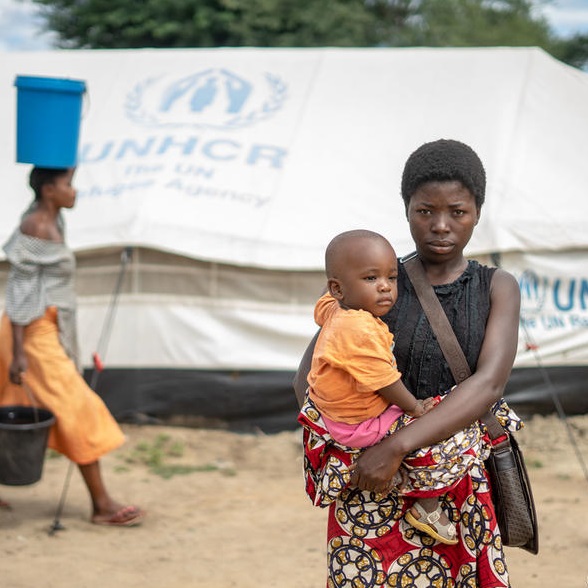Livelihoods Programme Monitoring Beneficiary Survey in 2017
Zimbabwe, 2017
Get MicrodataIdentification
UNHCR-ZWE-LIS-2017-v2.1
Livelihoods Programme Monitoring Beneficiary Survey in 2017
| Name | Country code |
|---|---|
| Zimbabwe | ZWE |
Socio-Economic/Monitoring Survey [hh/sems]
The UNHCR Livelihoods Monitoring Framework are designed to promote a standardized approach to tracking program performance and impact through revised impact and performance indicators with concrete definitions, which have made them more focused, precise and relevant to the key intervention areas. The data and the key analysis is available for UNHCR - and externally - financed programs across three primary focus areas - agriculture, self-employment and wage-employment - in terms of assets, employment, market access and more.
Since 2014, UNHCR has undertaken a comprehensive revision of the framework for monitoring UNHCR Livelihoods and Economic Inclusion programs. Since 2017, mobile data collection (survey) tools have been rolled out globally, including in Zimbabwe. The participating operations conducted a household survey to a sample of beneficiaries of each livelihoods project implemented by UNHCR and its partner. The dataset consists of baseline (103 observations) and endline data (89 observations) from the same sample beneficiaries, in order to compare before and after the project implementation and thus to measure the impact.
Sample survey data [ssd]
Household
Version
2.1: Edited, anonymous dataset for public distribution.
2019-12
Scope
The Livelihoods Programme Monitoring Beneficiary Survey includes the following topics:
- Partner information including location of household and type of survey round (Baseline/ Endline)
- General information on beneficiary
- Access to agriculture production enabled and enhanced (social assets, financial access, agricultural employment, crop production, animal production, fishery production, market access, change income/saving)
- Access to self-employment/ business facilitated (social assets, financial access, self-employment, market access, changing in income/saving)
- Access to wage employment facilitated (social assets, financial access, wage employment, change in income/ saving)
| Topic |
|---|
| Income Generation |
| Agriculture |
| Livestock / Animal Husbandry |
| Fisheries |
| Capacity Building / Training |
| Livelihood & Social cohesion |
| Solutions |
Coverage
Harare
Tongogara
Producers and sponsors
| Name | Affiliation |
|---|---|
| United Nations High Commissioner for Refugees | UNHCR |
Sampling
The sample size for this dataset is:
Baseline data : 103
Endline data : 89
Total : 192
The sampling was conducted by each participating operation based on general sampling guidance provided as the following;
- At least 100 randomly selected beneficiaries for each project
- Representativeness of sub-groups (gender, camp, etc.) should be kept as much as possible
- Baseline and endline beneficiaries should be the same
Some operations may deviate from the sampling guidance due to local constraints such as logistical and security obstacles.
Information not available
No weights were applied during the analysis
Survey instrument
The survey questionnaire used to collect the survey consists of five sections: Partner Information, General Information on Beneficiary, Access to Agricultural Production Enabled and Enhanced, Access to Self-Employment/ Business Facilitated, and Access to Wage Employment Facilitated.
Data collection
| Start | End |
|---|---|
| 2017-01-01 | 2017-12-31 |
| Name |
|---|
| Goal, Ireland |
| United Nations High Commissioner for Refugees |
Data was collected through computer-assisted face-to-face interviewing (on tablets)
Data processing
The dataset presented here has undergone light checking, cleaning, harmonisation of localised information, and restructuring (data may still contain errors) as well as anonymization (includes removal of direct identifiers and sensitive variables, and grouping values of select variables). Empty values can occur for several reasons (e.g. no occurrence of agricultural interventions among the beneficiaries will result in empty variables for the agricultural module).
Data Access
Cite this data as follows:
UNHCR (2017) Livelihoods Monitoring Data for Zimbabwe. UNHCR microdata library: https://microdata.unhcr.org
Contacts
| Name | Affiliation | |
|---|---|---|
| Solutions | UNHCR | solutions@unhcr.org |
| Curation Team | UNHCR | microdata@unhcr.org |
Metadata production
UNHCR-ZWE-2017-LIS-1.4
| Name | Role |
|---|---|
| United Nations High Commissioner for Refugees | Collection and documentation of records |
Metadata version
Version 1.4
